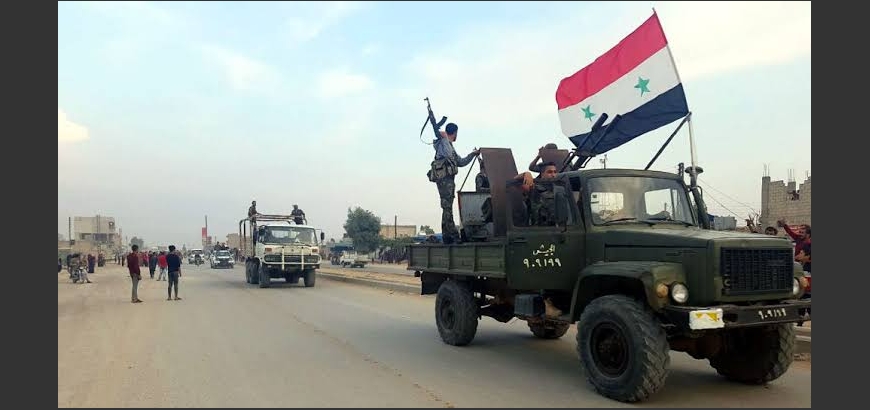Assad’s forces have deployed in new positions in eastern and northern Syria in accordance with the Russian-Turkish deal, which still remains opaque, whether in terms of the lines of control or the parties operating on the ground.
The Assad regime’s official agency, SANA, said on Monday that Assad’s forces had expanded their deployment in the al-Jazira areas and had deployed in new points in the northern Hassakeh countryside.
The agency added that the deployment was concentrated in the area of the Mabrouka electricity plant and previously at the Laylan intersection west of Tel Tamr, whereby they entered the town of al-Susah and the grain silos in the northwestern Hassakeh countryside.
The expanded deployment by Assad’s forces in northern and eastern Syria comes amid continuing patrols by Russian and Turkish forces in the area along Syria’s northern border.
So far the substance of the agreements reached between Moscow and Ankara with regards to areas of eastern Syrian has not been made clear, with the area is seeing developments without any official announcement, including drawing the lines of control around the international M4 highway.
On Dec. 1, 2019, the Turks and Russians reached a deal that drew new lines of control along the M4 highway in eastern Syria, which has seen clashes in recent days.
Military sources from the National Army told Alsouria Net at the time that a meeting had been held between Turkish and Russian officers near Ras al-Ayn, in which they had agreed the new lines of control around the highway.
According to the sources, the deal stipulated that Turkish forces and the National Army would deploy in the area north of the highway, while Assad’s forces and Russian police would deploy in the area to the south.
As a first step toward implementing the deal, the National Army withdrew from the silos in Ras al-Ayn, which it had taken control of during Operation Peace Spring.
Assad’s forces clear space for National Army
Ankara and Moscow reached a deal in the Russian city of Sochi on Oct. 22, 2019, stipulating that the Kurdish YPG would withdraw with their weapons from the Turkish border at a depth of 30 kilometers within 150 hours.
The deal stipulated that Russian military police and the regime’s border guard would enter the Syrian side of the Turkish-Syrian border outside the areas of Operation Peace Spring, defined as the areas from Ras al-Ayn up to Tel Abyad in the northern Raqqa countryside.
The deal called for joint Turkish-Russian military patrols east and west of the Euphrates at a depth of 10 kilometers, except for Qamishli, to avoid contact with the Syrian regime forces there.
This article was translated and edited by The Syrian Observer. The Syrian Observer has not verified the content of this story. Responsibility for the information and views set out in this article lies entirely with the author.


